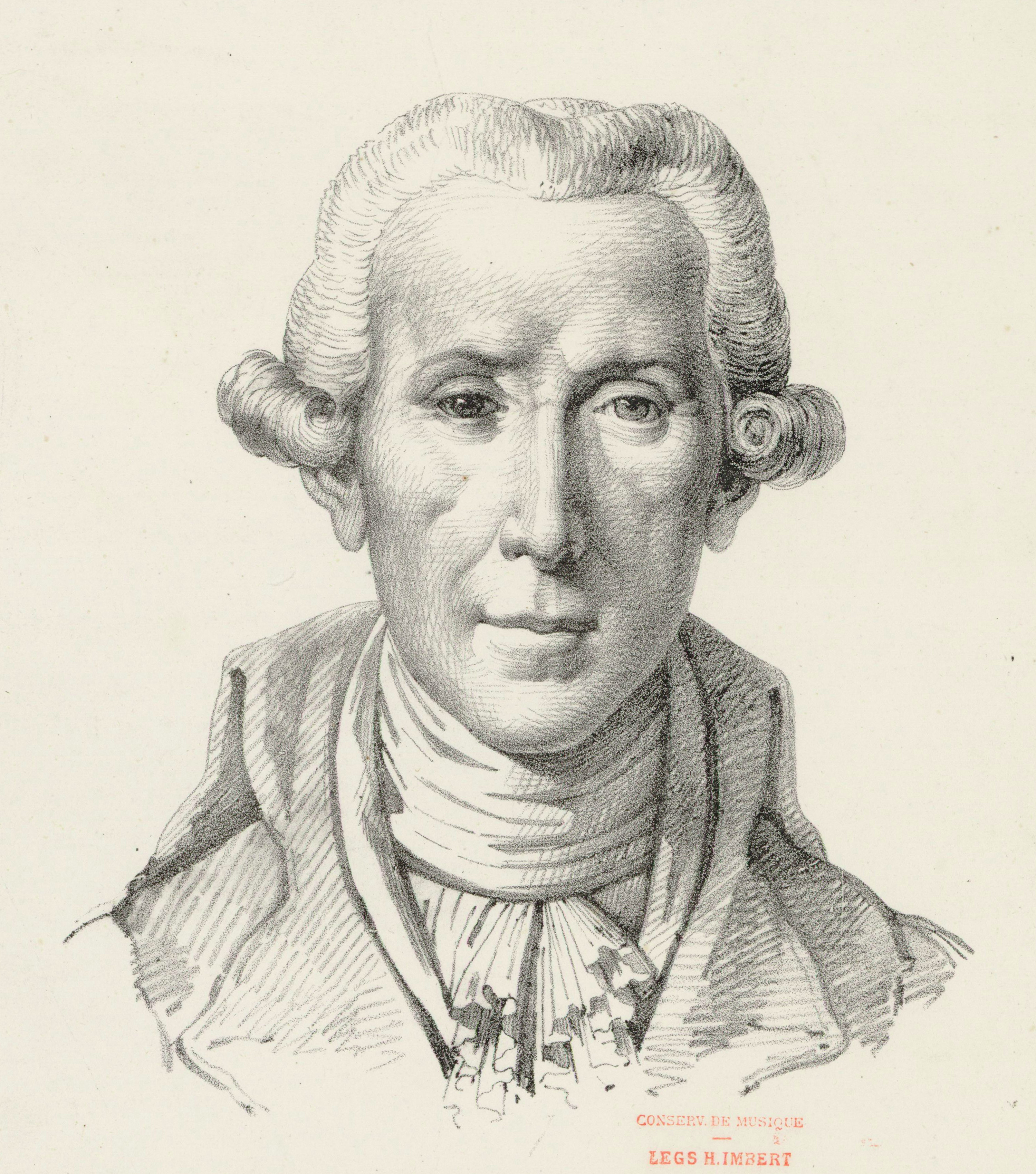
Luigi Boccherini
(1743-1805, Italian-born Spanish)Boccherini is most widely known for one particular ...
* minuet (mvt.3) from his String Quintet, Op. 11, No. 5
* aka Celebrated Minuet
Christoph Willibald Gluck
(1714–1787, German)
 |
| Gluck playing his clavichord - Joseph Duplessis (1725–1802, French) - oil on canvas (100 x 80.5 cm) 1775 - Kunsthistorisches Museum (Vienna) |
Gluck brought reforms to opera. Expousing a more continuous texture in which music served the poetry and drama of the libretto, he employed vivid characterization, simple plots, and large-scale planning of music to bring universal human themes and emotions to life.
With a series of radical new works in the 1760s, among them Orfeo ed Euridice and Alceste, he broke the stranglehold that Metastasian opera seria (serious opera, contrast to opera buffa / comic opera) had enjoyed for much of the century.Orfeo ed Euridice / Orpheus and Eurydice
Orpheus /ˈɔrfiːəs/ loved his wife Eurydice /jʊˈrɪdɨsiː/ dearly and tried to bring her back from the dead with his enchanting music.Ouvertüre
(L) Dance of the Blessed Spirits
Alceste
/Alkēstis/
- an Athenian tragedy by the ancient Greek playwright Euripides
- Alceste sacrificed her own life to save her dying husband King Admetus
La Rencontre Imprévue
- opéra comique style, incorporating spoken dialogue
- set in Cairo, it features a “harem escape”, a plot much popular then in Vienna fascinated by Islam and by Turkish music
Ouvertüre
Iphigénie en Tauride
Gluck's finest work, the music is dramatic, expressive, and almost symphonic in its orchestration.
2 hours
(1714-1788, German)
He bridged the gap between the Baroque style of his father, J.S. Bach, and the Classical style of Haydn and Mozart.
Magnificat in D (WQ215)
CPE Bach adapted the same key and text of his father's Magnificat, and achieved more homophonic and melodious effects.
Flute Concerto in G (WQ169)
1 of 5 flute concertos adapted from Bach's keyboard compositions.
Symphony in E b (WQ179)
In new Classical style, with its light homophonic (rather than polyphonic) effects.
When Carl Czerny
 went to study with Beethoven, he was required to purchase C.P.E. Bach's True Art of Keyboard Playing, which is now perhaps better known than any of his music.
went to study with Beethoven, he was required to purchase C.P.E. Bach's True Art of Keyboard Playing, which is now perhaps better known than any of his music.Johann Christian Bach
(1735-1782, German)
- aka “the London Bach”, “the English Bach”
- the 18th child of J.S. Bach
(L) Symphonies for Double Orchestra, Op. 18
(R) Concerts performed at
the Hanover Square Rooms in London,
featuring many fashionable musicians,
were popular in the 18th century.
François-Adrien Boieldieu
[fʁɑ̃.swa a.dʁiɛ̃ bwa.ɛld.jø] (1775–1834, French)
- a composer mainly of operas, often called "the French Mozart"
* Concerto for Harp and Orchestra, Mvt.1
- a composer mainly of operas, often called "the French Mozart"
* Concerto for Harp and Orchestra, Mvt.1
Leopold Mozart
(1719-1787, German)
- father of Wolfgang Amadeus Mozart
* Symphony in G “Neue Lambacher”
(1717–1757, Czech)
He is known for his 58 surviving symphonies, which established the four-movement pattern and the Classical style.
J. G. Albrechtsberger
(1736-1809, Austrian)
- a great organist and a prolific composer
- one of Beethoven's teachers
Giovanni Paisiello
(or Paesiello; 1740–1816, Italian)
- the most popular opera composer of the late 1700s
- his style influenced Mozart, Rossini, Bellini, Donizetti
 |
| Portrait of Giovanni Paisiello - Élisabeth Louise Vigée Le Brun (1755–1842, French) - oil on canvas (130.8 x 98.3 cm) 1791 - Versailles (Paris) |
Nina opera
“Nina, o sia La pazza per amore”
(Nina, or Madly in Love)
The Barber of Seville opera
Jean-Paul-Égide Martini
(1741-1816, French)
(L) Plaisir d'amour
(R) Can't Help Falling in Love
Muzio Clementi
(1752–1832, Italian-born English)
Abandoning traditional 2-movement sonatas, Clementi initiated 3-movement forms.
* 6 Sonatinas for Piano, Op. 36, No. 1
 |
A Concert (in France) - Giovanni Paolo Panini (1720-1812, Italian) - oil on canvas (155 x 119 cm) 1751 - Dickinson Gallery (London, New York) |
Source: Wikipedia




No comments:
Post a Comment